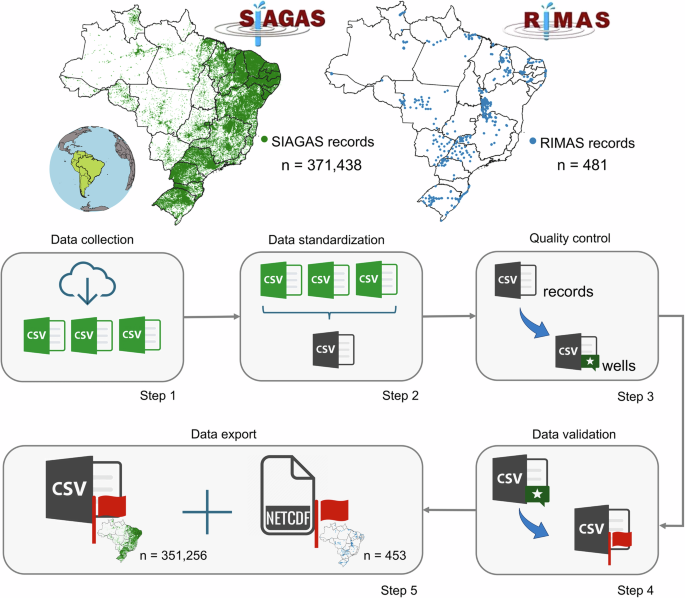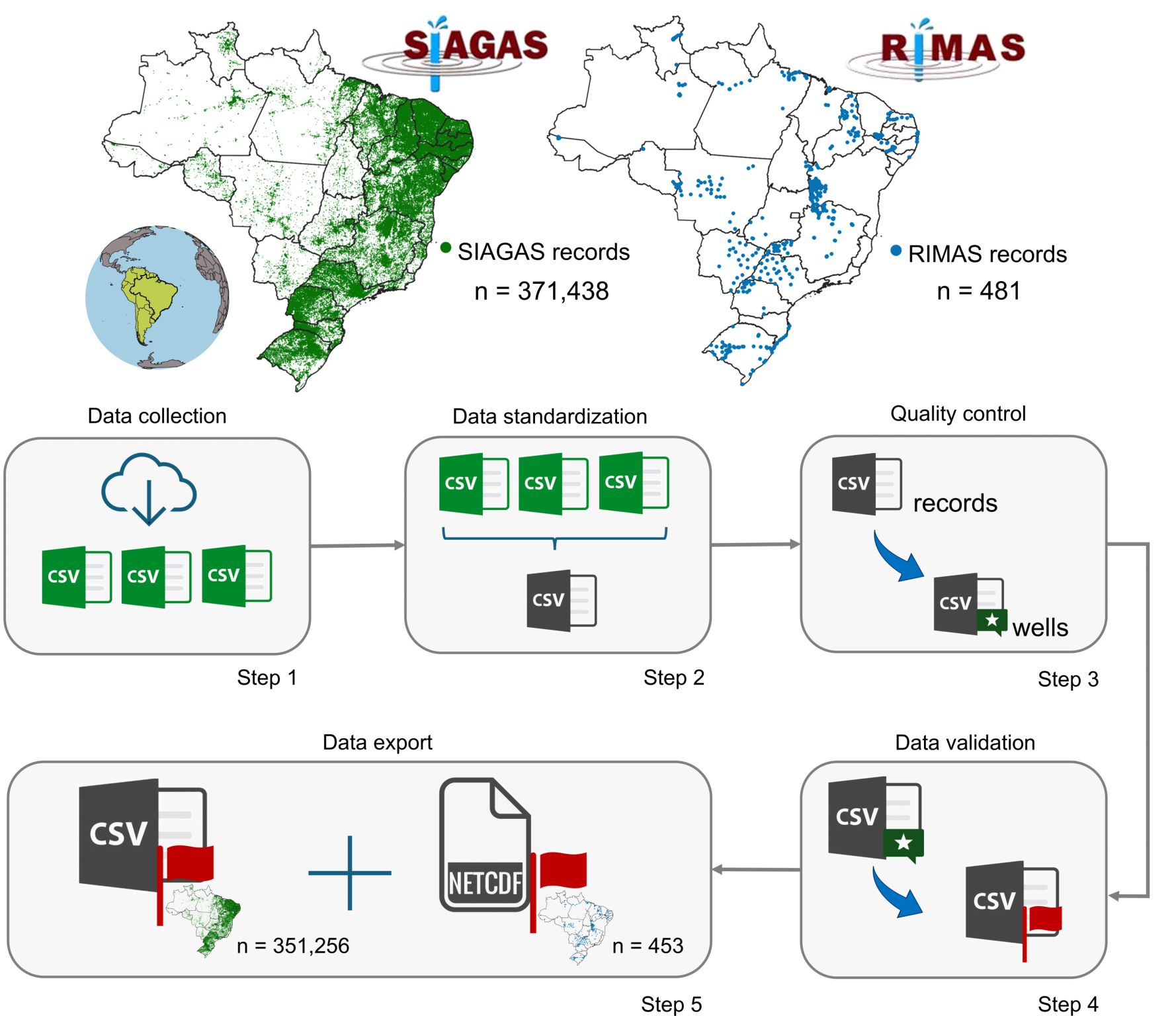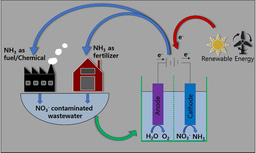A Groundwater Well Database for Brazil
Published in Earth & Environment and Sustainability
Explore the Research

A groundwater well database for Brazil (GWDBrazil) - Scientific Data
Scientific Data - A groundwater well database for Brazil (GWDBrazil)
Groundwater provides drinking water to billions of people, supports nearly half of the world’s irrigation, and sustains rivers, wetlands, and other ecosystems. Besides, its importance is only expected to grow as demand rises, climate change intensifies pressures on water resources, and surface water pollution increases.
Yet, despite this importance, groundwater and surface water have historically been managed separately, with legislation often placing greater emphasis on surface water. One of the greatest challenges to integrated management is the lack of reliable data. This is a global problem, but it is particularly acute in countries where groundwater monitoring networks are still in development. For example, Brazil — a country with continental dimensions — has only about 500 monitoring wells organized by the Geological Survey of Brazil. By contrast, U.S. Geological Survey’s National Ground-Water Monitoring Network tracks approximately 18,000 wells.
Without comprehensive data, scientists, policymakers, and communities struggle to answer critical questions: What are the dynamics of river–aquifer interactions? How does vegetation rely on groundwater during droughts? What are the spatial and temporal trends in groundwater use across the country? What are the impacts of climate events on groundwater?
To help address this gap, we developed the Groundwater Wells Database for Brazil (GWDBrazil) — a harmonized and quality-controlled dataset derived from Geological Survey of Brazil projects. The data compilation process involved several steps (see Figure 1). We first gathered well information from two large projects (step 1) — the Groundwater Information System (SIAGAS) and the Integrated Groundwater Monitoring Network Project (RIMAS) from Geological Survey of Brazil. For further details, we recommend consulting the Geological Survey of Brazil website. Next, we harmonized the records (step 2), applied quality control checks (step 3), and, when possible, cross-verified them (step 4). Each well was then flagged with a quality indicator. Finally, the data was released in both tabular (CSV) and geospatial (Shapefile, NetCDF) formats, making it accessible to both researchers and practitioners (step 5). The final product is a dataset of 351,256 wells, including about 450 monitoring wells with continuous records (2010–2024).

In a previous article, “Widespread Potential for Streamflow Leakage Across Brazil” (published in Nature Communications), we analyzed groundwater-level observations from 17,972 wells across Brazil. We focused on wells in unconfined aquifers with less than 100 m deep, located within 1,000 m of the nearest river, to maximize the likelihood of hydraulic connection. We found that most Brazilian well water levels analyzed (55%) lie below nearby stream surfaces, suggesting that streamwater may seep into the subsurface if the underlying material is sufficiently permeable. Despite the uncertainties inherent to large-scale study, our results call for a paradigm shift in river management, as losing rivers have important implications for water availability, riparian ecosystems, and environmental flows.
We believe by lowering the barrier to accessing and using well data, this database encourages broader collaboration between groundwater specialists, surface water hydrologists, policymakers, and local communities.
GWDBrazil is not the final word on groundwater data in Brazil, but rather a starting point. It highlights both the progress made and the challenges ahead: improving monitoring coverage, integrating more datasets, and ensuring that groundwater management keeps pace with the population’s growing demand for water and food security.
Ultimately, our goal is that GWDBrazil serves as a foundation for science, policy, and society — fostering a more transparent and holistic understanding of Brazil’s hidden water resources.
All products generated in this study are openly available via the Zenodo repository (https://zenodo.org/records/16755455)
We emphasize that this is a secondary database based on data from the Geological Survey of Brazil database and does not constitute an official repository of the institution. We recommend that all users refer directly to the original databases available on the SGB website: the Integrated Groundwater Monitoring Network Project (https://rimasweb.sgb.gov.br/layout/apresentacao.php) and the Groundwater Information System (https://siagasweb.sgb.gov.br/layout/apresentacao.php). The Geological Survey of Brazil databases are continuously updated and contain more comprehensive information than the database presented here.
Follow the Topic
-
Scientific Data

A peer-reviewed, open-access journal for descriptions of datasets, and research that advances the sharing and reuse of scientific data.
Related Collections
With Collections, you can get published faster and increase your visibility.
Genomes of endangered species
Publishing Model: Open Access
Deadline: Apr 01, 2026
Data for crop management
Publishing Model: Open Access
Deadline: Jan 17, 2026




Please sign in or register for FREE
If you are a registered user on Research Communities by Springer Nature, please sign in